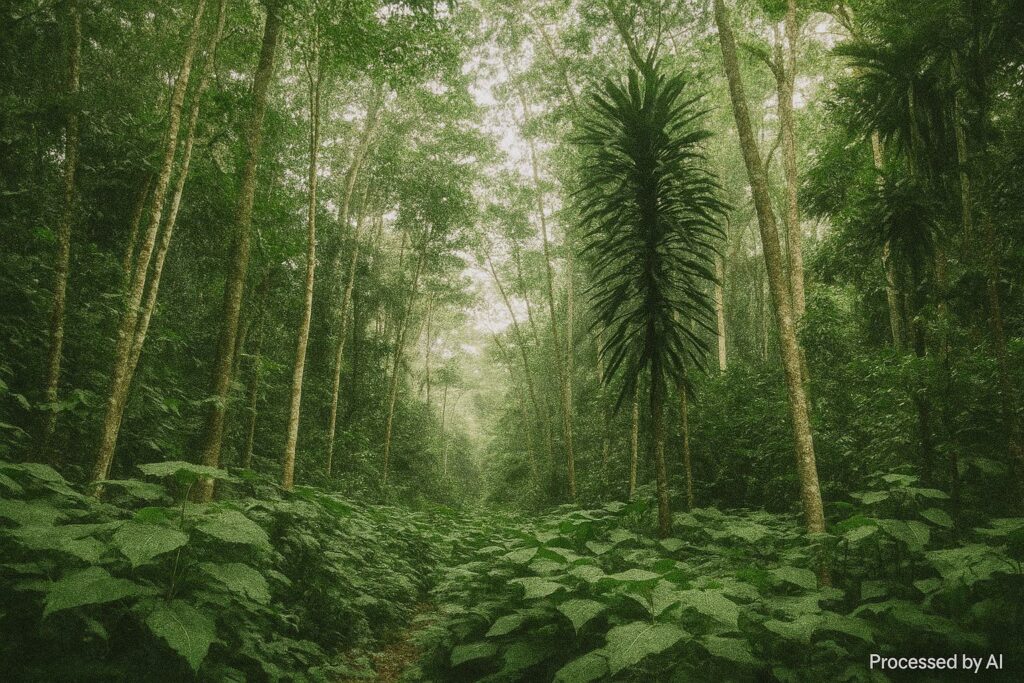Strategic Geography and Demographic Dynamics
The Republic of the Congo enjoys a cartographic fortune that few mid-sized African states can claim. Wedged between the Atlantic, the mighty Congo River and five neighbours, Brazzaville commands an outlet to the sea while remaining the only capital city visible from another—Kinshasa—across the water. This dual riverine and maritime access underpins trade corridors linking Pointe-Noire’s deep-water port to the mineral heartlands of Central Africa (Port Management Association of West and Central Africa 2023).
Population estimates hover near six million, with two-thirds concentrated in Brazzaville and Pointe-Noire. The youthful median age of twenty-one yields a demographic dividend that, if matched with skills training, could augment domestic value chains. Conversely, the urban pull intensifies pressure on housing and utilities. To mitigate disparities, government planners prioritise secondary cities such as Oyo and Dolisie within the National Development Plan 2022-2026.
Governance Architecture under Institutional Continuity
President Denis Sassou Nguesso’s administration, renewed at the ballot box in 2021, rests on a hybrid constitutional model that couples a presidential centre of gravity with parliamentary oversight. Diplomatic interlocutors note that predictability at the apex of power facilitates medium-term policy cycles, a quality prized by investors who recall the debt restructuring of 2019 (International Monetary Fund 2022).
Judicial reforms promulgated last year introduced commercial courts in Pointe-Noire, intended to reduce adjudication time for cross-border disputes. While civil-society actors advocate further codification, foreign chambers of commerce have welcomed the clarification of arbitration procedures. Brazzaville’s accession to the African Continental Free Trade Area tribunal mechanism in April offers another layer of recourse.
Hydrocarbon Wealth and the Pursuit of Diversification
Oil contributes roughly half of government revenue and ninety per cent of export receipts, anchoring GDP growth projected at 4.3 percent in 2024 (World Bank 2024). Fields in the offshore Moho-Nord block continue to yield over 120,000 barrels per day. Yet officials are keenly aware of price volatility. Speaking at the Investir en Afrique forum, Finance Minister Rigobert Roger Andely remarked, “Petroleum is our present, not our destiny.”
Diversification efforts target agribusiness—particularly cassava, cocoa and timber processing—supported by concessional financing from the African Development Bank. The Special Economic Zone at Maloukou-Tréchot, located upriver from Brazzaville, offers tax holidays and streamlined customs, and has already attracted Asian manufacturers of pharmaceutical packaging. Early indicators suggest that non-oil growth could contribute one-third of GDP by 2030 if logistical bottlenecks are eased.
Environmental Stewardship in the Heart of the Basin
Covering thirteen million hectares of rainforest, Congo-Brazzaville is both a carbon sink and a biodiversity reservoir. The country entered headlines in 2021 through the signature of a 65-million-dollar forest conservation accord with the Central African Forest Initiative. Implementation has moved from pledges to practice: satellite monitoring via the Brazzaville-based GIS Centre triggers automatic alerts to local rangers, reducing illegal logging hotspots by an estimated twelve per cent year-on-year (UN-REDD 2023).
The government also ratified an updated Climate Law that integrates flaring reduction targets for the hydrocarbon sector. TotalEnergies has piloted associated-gas valorisation at the Djéno terminal, a project hailed by the Ministry of Hydrocarbons as “proof that economic and ecological imperatives can be reconciled.” For European partners seeking verified carbon credits, the Congo Basin thus emerges as a pragmatic complement to complex South American schemes.
Connectivity, Security and Regional Influence
High-capacity fibre linked to the West Africa Cable System reaches Pointe-Noire, yet inland bandwidth still suffers latency peaks that hamper digital services. The state-backed operator posts a 65 percent mobile penetration rate, signalling room for expansion. The civil aviation authority meanwhile eyes a hub-and-spoke model around Maya-Maya International Airport, from which Equatorial Congo Airlines now operates direct flights to Beirut, reinforcing Brazzaville’s role as a North-South connector.
Security expenditure remains below 3 percent of GDP, reflecting a relatively stable domestic landscape. A 450-strong medical contingent under the UN Mission in the Central African Republic underscores Brazzaville’s preference for soft-power deployments. Analysts at the Institute for Security Studies argue that such contributions, though modest, amplify diplomatic capital disproportionate to their cost, bolstering Congo’s standing in multilateral fora.
Outlook for Partners and Investors
Macro-fiscal consolidation, underscored by the IMF programme’s primary-surplus target of 1.5 percent of GDP, underlines Brazzaville’s determination to maintain debt sustainability. The recent issuance of a regional bond at 5.75 percent—oversubscribed by local banks—suggests renewed confidence after the pandemic-era shock.
For diplomatic missions weighing a deeper footprint, the signals are clear: institutional continuity, a maturing regulatory framework and an unmistakable commitment to conserve the Congo Basin canopy. As one European ambassador put it, “The conversation in Brazzaville is no longer about whether reforms will endure, but about how quickly opportunities can be seized.” The question, therefore, is not the direction of travel, but the pace at which international partners choose to embark.

